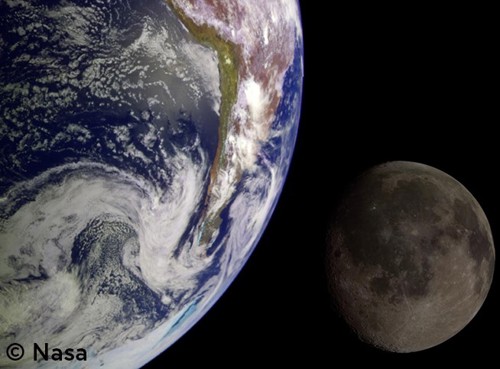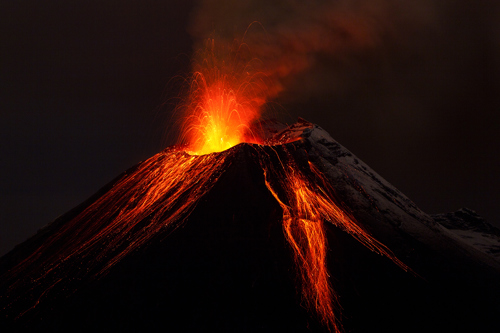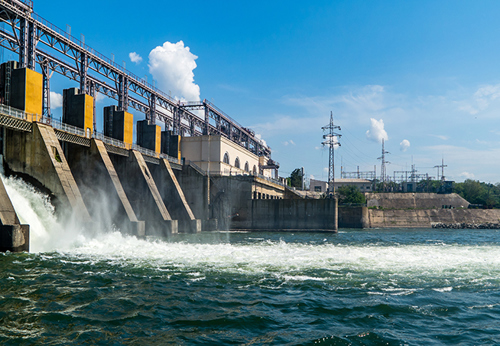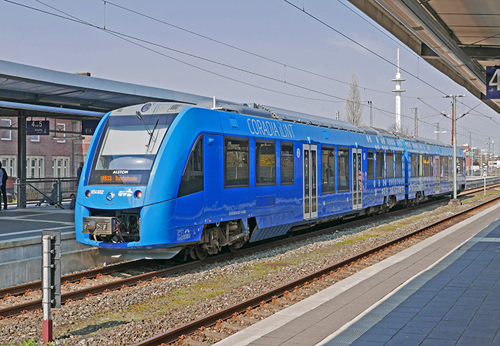Inspire students with discussing where hydrogen comes from and how it can be used in fuel cells. Get them thinking about what in the home or classroom it could power for a cleaner and greener future. We also have a secondary topic below to make teaching about the energy grid the highlight of everyone’s week. Memorise our fun facts to stun the staff during assembly and bring topics to life with an array of resources for you to choose from as you plan lessons with ease.
Food engineering in the News!
What?
Last month’s article was about space exploration, and the need for engineers to ‘design out’ any excess, focusing solely on things that are absolutely necessary. This month, we’re talking about something a bit closer to home, but something which has benefitted from space exploration, and which many people associate with this time of year—we’re talking about food engineering.
So what?
Food engineering is one of the most under-estimated and important fields of STEM. Food engineers need to balance competing forces in their work: reducing CO2 by controlling food miles, meeting customer expectations of quality and choice, making food which is safe and wholesome, and meeting our needs for diverse religious and cultural foods, in addition to the technologies that we use to prepare meals safely and efficiently in our homes.
Modern appliances that we use for preparing food (such as convection ovens, microwaves, and air fryers) can reduce the carbon emissions of preparing our meals, while reducing the amount of unhealthy fats we consume, while saving us time and money. Food chains and catering products are constantly being monitored to get wholesome and ethically sourced food to our homes, and to reduce the carbon in providing and preparing tasty and healthy meals. An example is how air fryers and associated food products are currently on the rise, as engineers try to meet these challenges of reducing energy in sourcing and preparing food while maintaining health and wellbeing.
By reducing food miles, and by optimising these devices, engineers seek to minimise environmental damage, allowing us to find and prepare wholesome food, in ways which can be eaten by people of diverse beliefs, while avoiding the temptation of ‘convenience’ foods. These tend to be more processed than fresh products, containing higher levels of artificial preservatives, and come with more wasteful packaging.
Now what?
Convection ovens, microwaves, and air fryers try to reduce energy by providing heat where we need it, in smaller compartments, distributing that heat efficiently. A modern air fryer for example (which doesn’t actually ‘fry’) has non-stick surfaces that were originally designed for spacecraft, it has a fan spinning at thousands of revolutions per minute, and the heat can be controlled to optimise the ‘Maillard reaction’, where our food surfaces go brown and crispy at certain temperatures.
Lastly…
Food engineering can be incredibly challenging and rewarding, with the need to provide meals in energy-efficient ways, that accommodate religious and cultural diversity, cost, quality, and safety. Can you think of ways to help students consider how they might meet such requirements?
The inspiration for this article was provided by Marie (our Teaching Resources and Website Administrator) and Harriet (our Volunteer Coordinator).
Related resources
Primary resources:
Secondary resources:
External links
Space engineering in the News!
What?
Previously we spoke about extracting and reusing valuable materials through urban mining, one of the ways that engineers try to reduce the waste that our activities generate. This month, we’re talking about one of the extreme environments for engineers, where waste simply cannot be tolerated—space exploration! As this news article is being released, a space engineering mission is on its to Europa, Jupiter’s icy moon, and home to space’s nearest Ocean to Earth.
So what?
This mission to assess if Europa can support life—called Europa Clipper—is jam packed with nine sensors, communication devices, a small amount of fuel, and flight control, with nothing being wasted. Europa Clipper is around the size of a basketball court, and around 5 metres high, with solar arrays providing the majority of its power to make the trip—its destination is five times further from the sun than our own planet! The average distance from Earth to Europa is around 628 million kilometres, so we can see why engineers cannot tolerate any waste in the design of Europa Clipper. A lot of the weight is a thick wall around the electronics, because Europa gets a lot of radiation which comes from Jupiter’s magnetic field.
Now what?
The instruments include cameras to capture images and maps of Europa's surface and atmosphere, a radar and thermal instruments to search for water beneath the ice. Beyond Earth, Europa is considered one of the most promising places where we might find a place in our solar system where life can be supported. Europa Clipper will tell engineers and scientists whether life is possible there, and there will also be a lot to learn about designing lean systems, which are reliable yet which do not waste resources.
Lastly…
Space exploration can be incredibly challenging and rewarding for engineers and scientists, with many constraints and conditions that do not exist on Earth. Can you think of ways to help students consider how they might think about space exploration?
https://europa.nasa.gov/mission/about/
The inspiration for this article was provided by Marie (our Teaching Resources and Website Administrator) and Harriet (our Education Volunteer Manager).

Related resources
Primary resources:
Stadium design in the news!
What?
Previously we spoke about connected wristbands for the entertainment industry, used in concerts and sporting events. This month we’re talking about the design of venues, those huge structures where large scale events take place. Stadiums (or stadia) have a long history for shared experiences and social interaction during big events. The earliest in the world was believed to be the one at Olympia in Greece, for the Olympics in 776 BC. One of the most modern stadiums is the new Everton Football Club Stadium, opening soon on Liverpool’s waterfront in the UK.
So what?
Unlike the builders at Olympia, the engineers who are designing and building the new Everton Stadium have to consider much more than allowing people to share an experience together. That said, one of the main things they need to consider is still how to allow everyone to see and hear what’s happening in a central area. Engineers now need to consider how people will get to and from the venue, how to reduce the carbon footprint of building and running the venue, how it will impact on the surrounding ecology like disturbing wildlife and local housing, and how to help the people in the venue, of diverse characteristics, ages, and interests, to all feel safe and comfortable throughout their experience.
Now what?
Everton Stadium has a capacity of over 50,000 people, and it’s being built with a priority on sustainability and the local community. Fans will be able to take public transport to the venue, the site is within walking distance to the city centre, and throughout its construction the engineers have considered the skills and learning opportunities for local people. It was developed on disused docklands, while fish and birds were rehomed from the site, and much of the old dockyard masonry has been reused. Can you think of ways to help students consider how they might design and build their own stadium, while thinking of social responsibility, ethical practices, and environmental impact?
Lastly…
While these things are attractive and interesting for sport, there are also links to other aspects of engineering and improving social life. Maybe we can ask our students to think of other benefits of our designs, like wellbeing, community engagement, economic income for deprived areas, work opportunities, and social interactions for the people using facilities.
The inspiration for this article was provided by Phil, IET Education Volunteer.

Related resources
Primary resources:
Secondary resources:
External links
Concert LED wristbands in the News!
What?
In previous months we’ve spoken about engineering for different modes of transport, and this month we’ll be discussing engineering for entertainment. Sound engineers and lighting engineers have long been associated with the entertainment industry, with communications engineers catching up in recent years, during the period known to some as the fourth industrial revolution. An area of entertainment at the overlap of all three is concert LED wristbands!
So what?
Taylor Swift recently made LED wristbands big news in the Eras Tour, although the technology is quite established. Concert LED wristbands use either radio frequency technology or infrared technology to allow specific parts of the audience to take part on different ways. They might light up in different colours to form patterns that move around an entire stadium, or direct different areas of a theatre to join in at certain times. They’ve been used recently at events by Lada Gaga, Coldplay, and large sporting occasions like the US Superbowl.
Now what?
Lower tech versions are available to buy now, for parties for up to 20 or so people. But there isn’t much to them in terms of educational value. In fact, if we’re teaching, we can learn much more about how the technology works using the IET’s various micro:bit projects. We can design projects for our students which light up a certain way, and make a certain sound, when we send a signal to specific radio groups. And while there are plenty of ‘wearable’ solutions to buy for the micro:bit, making our own wristbands can be much more creative and developmental.
Lastly…
While these things are attractive in terms of entertainment, there are also links to other aspects of engineering. Maybe we can ask our students to think of other uses for these technologies, like alerting us about the location of vulnerable people, or offering instructions for people with disabilities, or signalling crowds about the ways to exit crowded places in an emergency.
The inspiration for this article was provided by Phil, IET Education Volunteer.

Related resources
Primary resources:
Secondary resources:
External links
Alternatives to lithium batteries in the News!
What?
Last month we spoke about personal air vehicles, or eVTOLs (electric vertical take-off and landing). One of the problems with all electric vehicles—on land, in the sea, or in the air—is that they need rare earth minerals to make things like lithium batteries. The engineering activities for mining, processing, and disposing of lithium batteries create a huge amount of environmental damage, and these rare earth minerals are in all sorts of things that we take for granted every day: phones, watches, TVs, portable tools, and much more.
So what?
Globally around 90% of battery applications use lithium. These batteries help us to reduce our consumption of fossil fuels, but they create different kinds of their own problems, like water shortage, biodiversity loss, damage to ecosystems, and soil degradation. If demand continues at its current rate, and we keep pursuing net zero, lithium will become more important than oil and gas by 2050. Some alternatives that are being investigated sound wacky, but we need disruptive innovations in addition to demand reduction.
Now what?
If we’re teaching, innovations might be useful for mini-research projects across the curriculum. Swedish and Finnish teams are investigating battery power from lignin, which they’re extracting from trees, believe it or not. US, German, and Australian researchers are proposing the answer might be in scalable sea-salt batteries, which are actually old inventions, but they can be made much more efficient with modern manufacturing. Portuguese and Austrian inventors are proposing various blends of glass batteries might help.
Lastly…
All of these have their own environmental impacts, as do fossil fuels, so perhaps what we’re actually looking for is the “least bad” option! The best forms of energy are the ones that we don’t need in the first place. If we woke up tomorrow, and as well as being teachers we were engineers, what could we do to reduce the environmental damage related to lithium batteries?
The inspiration for this article was provided by Marie (Teaching Resources and Website Administrator) and Harriet (Volunteer Coordinator).

Related resources
Primary resources:
Secondary resources:
External links:
Personal Air Vehicles in the News!
What?
Last month we spoke about potholes. One way around potholes might be to buy ourselves an electric vehicle with a difference: a new eVTOL vehicle (electric vertical take-off and landing). Later this year, a number of eVTOLs will be introduced to the market, including the Ryse Recon, the Pivotal Helix, and the larger Vertical Aerospace VX4. Prices will start at around £150,000 for a cheap (!) one-seater. Some will even be able to land and take off on water.
So what?
One of the challenges for engineers and technologists is how we safely regulate these vehicles. Can we direct young people to think of anything that engineers might need to think about? Ideas to keep them safe include limiting the numbers of passengers, keeping the aircraft very light, and controlling the speeds that they can travel at. If we’ve ever used a drone, we might be familiar with RTH or ‘return to home’, where the eVTOL will go back to a safe landing site, and there are safety features used in cars that might be used in eVTOLs too.
Now what?
At the moment, eVTOLs are limited to people with a lot of money to spare, but we need to remember the same was once true of electric scooters, which these days we can see everywhere! So eVTOLs will certainly become cheaper and more available in the next few years. It seems inevitable that we’ll see more of them in the air around us, and engineers will need to keep thinking of ways to safely regulate their use, to protect the people operating them, and those of us who are on the ground too.
Lastly…A question to ask the young people around us, If you woke up tomorrow and you were an engineer, what would you do to help with safely regulating eVTOLs?
This news story was suggested by Kevin, IET Education Volunteer, April 2024.

Related resources
Primary resources:
Secondary resources
External link:
Odysseus Robot, Moon adventure
The Odysseus robot recently made history by becoming the first privately built and operated robot to land softly on the Moon.
But wait, there’s a twist! Odysseus didn’t land exactly as planned. Its like when you try to land a paper airplane, and it veers off course a little. Odysseus came down three times faster than planned, tipped over and broke a leg during its lunar touchdown.
Despite the unexpected tumble, Odysseus is a trooper! It’s still working hard sending back cool data about the Moon. Imagine taking pictures and measuring things up there!
Here’s the scoop:
Odysseus is lying at a angle to the surface of roughly 30 degrees.
Whilst its antennas are still pointing at Earth, its solar cells are soaking up sunlight to charge its batteries. This is however set to change imminently when the sun disappears over the horizon.
Once the batteries are no longer being charged by the sun, the robot will go into hibernation.
Scientists are hopeful that when Odysseus starts being charged by the sun again, around mid-March, we will re-establish contact.
So, event though Odysseus hand a little moon hiccup, its still a superstar! Keep exploring little robot!
This news story was suggested by Marie, Resources and Website Administrator, March 2024.
Related resources
Primary resources:
Secondary resources:
Monitoring natural disasters
Has the recent volcanic eruption in Iceland got your students wondering how volcanoes are monitored?
Fortunately for the residents of Grindavik, a fishing town located 2.5 miles away from Iceland’s most recent volcanic eruption, around 4,000 residents were evacuated just one month before the eruption occurred.
Seismologists are scientists who specialise in the study of earthquakes and seismic waves.
Seismologists use special tools to monitor volcanoes and predict when they might erupt.
One of the tools they use is called a seismometer. It can detect and record ground movement caused by earthquakes, volcanic eruptions, and other events.
By analysing the data collected by seismometers, seismologists can determine the location, magnitude, and frequency of earthquakes and other seismic events.
This information can help them to better understand the behaviour of volcanoes and predict when they might erupt.
As the engineers of our future, can learners program something to alert us of another? Check out our teaching resources using the BBC micro:bit and see what they can Engineer!
This news story was suggested by Harriet, Volunteer Coordinator, February 2024.
Related resources
Primary resources:
Secondary resources:
Barbie in space!
2023 saw the release of Barbie the movie - based on the popular doll.
Barbie the movie is a fun, empowering, and heartwarming story that celebrates the diversity and potential of women.
But, did you know Barbie has reached new heights with her latest adventure: going to the International Space Station (ISS) as part of Mission DreamStar ‘an educational outreach project by Mattel that introduces young girls to careers in STEM fields.’
In 2022 two Barbie dolls were sent to the ISS, they spent several months in orbit and returned to Earth in 2023.
Fun Facts:
- Barbie’s trip to the ISS was not her first time dabbling in Aerospace. Before her trip to the ISS, Barbie had a crucial role in Moon Exploration. Barbie was involved in experimenting with ways in which astronauts could remove moondust from their space suits.
- Barbie Astronaut dolls were released in the 1960s, 13 years before NASA accepted its first female astronauts, and 18 years before the first American women would go to space.
- Ahead of their trip to the ISS the two Barbie dolls received special preparation - their accessories had to remain on the ground for this mission and their hair had to be styled to ensure there would be no hair shedding into the spaceflight environment.
This news story was suggested by Harriet, Volunteer Coordinator, January 2024.
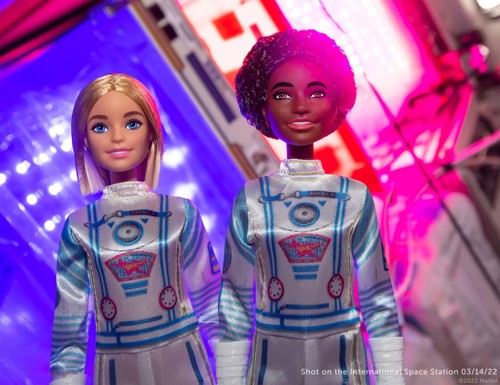 Related resources
Related resources
Primary resources:
Secondary resources:
External links:
Can I be a ballet dancer and a scientist? A quantum ballerina? Can I ballet dance with a robot?
In short, yes!
Interested in how, or not convinced? Then read, watch and listen to Dr Merritt Moore’s life story so far as she has a career as both a professional ballet dancer and as an academic quantum physicist!
Originally born in Los Angeles and now living in London, Dr Moore was dancing from the age of 13. She has combined her Magna Cum Laude Honors in Physics from Harvard and PhD in Atomic and Laser Physics from the University of Oxford, with her ballet skills learnt with ballet companies such as Zurich Ballet, Boston Ballet, English National Ballet, and Norwegian National Ballet, thanks to a Universal Robot in Norway. She became inspired by the way the robot moved and rehearsed and developed a dance with her new hi-tech partner.
Alongside working with robots she has been awarded a place in Forbes 30 under 30, and was one of the 12 selected candidates to undergo rigorous astronaut selection on BBC Two "Astronauts: Do you have what it takes?"
Read about her incredible story using the links below, and see how she teaches and then dances with her robot partner here.
Fun facts:
- Merritt is featured in the book ‘Good Night Stories For Rebel Girls’. Read along with her on Facebook.
- It makes Merritt’s’ day to see photos of little girls dressing up in a lab coat and tutu.
- Her robot partner is known as "Baryshnibot", who is actually a Universal collaborative robot or UR cobot for short!
This news story was suggested by Zoe, IET Education Manager.
Related resources
Secondary resources:
External links:
-
Go to BBC News: How a robot inspired my ballet dancing BBC News: How a robot inspired my ballet dancing -
Go to British Vogue: How Exactly Does One Become A “Quantum Ballerina”? British Vogue: How Exactly Does One Become A “Quantum Ballerina”? -
Go to Pointe Magazine: How Quantum Physicist Ballerina Merritt Moore Learned to Dance With a Robot Pointe Magazine: How Quantum Physicist Ballerina Merritt Moore Learned to Dance With a Robot -
Go to Propela: How Quantum Physicist Ballerina Merritt Moore Learned to Dance With a Robot Propela: How Quantum Physicist Ballerina Merritt Moore Learned to Dance With a Robot
What more can be done in the fight against digital poverty?
Highlighted by the global pandemic, digital poverty is now at the forefront of most minds. The extent of the digital divide has only been expanded with many children now learning from home.
A lack of or limited access to the internet, none or not enough devices at home, and none or limited knowledge of using this technology has led to many students suffering by being left behind in their learning and studies from classmates and others around the UK.
These skills are already essential in most lines of work, and post-pandemic with the significant changes made to the way we work will almost certainly see a rise in demand for such skills.
Thankfully, a number of organisations and individuals are working hard to put an end to this, including the IET and Plum Innovations Ltd. Donated equipment, free broadband and community support are helping to reduce this, but there is still much more to be done.
Fun facts:
- Not all families have laptops and broadband to help their children keep learning at home.
- Even if schools can provide laptops there are still barriers in terms of parents' IT skills and children having space to study.
- Dixons Carphone has pledged £1m to help in the fight to end digital poverty in the UK.
This news story was suggested by Ji, Education Officer London (South).
Related resources
Secondary resources:
External links:
-
Go to Mobile Marketing magazine: Dixons Carphone pledges £1m in support of tackling digital poverty Mobile Marketing magazine: Dixons Carphone pledges £1m in support of tackling digital poverty -
Go to BBC News: 'Digital poverty' in schools where few have laptops BBC News: 'Digital poverty' in schools where few have laptops
Curriculum: KS4 Computing (England).
Can water keep the UK's electricity grid stable?
When reviewing the interesting year that was 2020 experts now think of it as the greenest year for electricity in Britain!
As well as the increase in renewable power systems (such as wind and solar) operating and a high number of coal-free days, part of the reason for 2020 being so green was due to the Drax’s Cruachan hydroelectric pumped storage plant that won a tender to provide inertia to National Grid from one of its four units. Inertia helps to keep the electricity system correctly balanced by running at the right frequency, reducing the potential of potentially serious power cuts.
The Cruachan plant is buried deep in the hollowed-out mountain of Ben Cruachan, near Argyll in Scotland. The plant was opened about 55 years ago and was a massive success story in engineering!
It is an amazingly impressive structure that acts like a giant battery to store the water for when it is needed. Its reversible turbines pump water from a Loch to fill an upper reservoir on the mountainside at times when there is low demand for electricity and the opposite when demand is high.
A career in engineering opens a whole new world of possibilities. As Cruachan shows, it can even move mountains!
Fun facts:
- 220,000 cubic metres of rock was blasted by explosives to create a cavern 1km inside the mountain that houses the turbines as well as a network of pipes and tunnels!
- Inertia behaves a bit like the shock absorbers in a car suspension, which dampens the effect of a sudden bump in the road and keeps the car stable and moving forward.
This news story was suggested by Erusa, Education Officer for Kent.
Related resources
Secondary resources:
External links:
-
Go to Press release: Drax begins ‘world-first’ power system stability contract with National Grid ESO Press release: Drax begins ‘world-first’ power system stability contract with National Grid ESO -
Go to News article: How a pumped storage plant is leading a new spin on grid stability in the UK News article: How a pumped storage plant is leading a new spin on grid stability in the UK
Curriculum: KS3 Physics, Fuels and energy sources. KS4 Chemistry (England).
Can hydrogen power our future?
If you burn hydrogen what do you get? Water! As hydrogen burns with oxygen it makes water which is also known as H2O.
So where can we get hydrogen from?
Some vehicles have been powered by hydrogen and this could be used as a direct fuel or used in a fuel cell which converts it into electricity.
What about aircraft?
Well, hydrogen and oxygen are used to put rockets into orbit, so potentially the same technology could be used for aircraft.
Maybe in the future, hydrogen could even be used in the home as an alternative to burning fossil fuels!
Fun facts:
- Hydrogen is the most abundant element on Earth.
- Hydrogen and fuel cells can be used in a broad range of applications from powering buildings and cars to portable electronic devices.
- Fuel cells are a clean way to produce power.
This news story was suggested by Roger, Education Officer for Merseyside and West Cheshire.
Related resources
Secondary resources:
External links:
Curriculum: KS3, KS4, Physics, Energy Resources (England).
We will also be featuring news and updates from our IET Education Officers and Ambassadors about how they are raising awareness and engaging children with STEM learning or projects in their local community.
Interested in getting involved and making a difference too?
Find out more about our Education volunteers and please do share your stories with us @IETeducation.
We will be updating this page regularly with more stories as they come in, so do keep checking back. Perhaps you might like to make one into a school project or just follow it for interest. Either way, get involved in the conversations @IETeducation.
For more extensive news updates on a wide variety of topics, check out the IET's E+T magazine.

